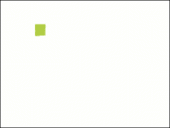A (kana)
あ in hiragana or ア in katakana (romanised a) is one of the Japanese kana that each represent one mora. あ is based on the sōsho style of kanji 安, and ア is from the radical of kanji 阿. In the modern Japanese system of alphabetical order, it occupies the first position of the alphabet, before い. Additionally, it is the 36th letter in Iroha, after て, before さ. Its hiragana resembles the kana no combined with a cross. The Unicode for あ is U+3042, and the Unicode for ア is U+30A2.
| a | ||||
|---|---|---|---|---|
| ||||
| transliteration | a | |||
| hiragana origin | 安 | |||
| katakana origin | 阿 | |||
| spelling kana | 朝日のア (Asahi no "a") | |||
| kana gojūon | ||||||||||||||||||||||||||||||||||||||||||||||||||
|---|---|---|---|---|---|---|---|---|---|---|---|---|---|---|---|---|---|---|---|---|---|---|---|---|---|---|---|---|---|---|---|---|---|---|---|---|---|---|---|---|---|---|---|---|---|---|---|---|---|---|
|
||||||||||||||||||||||||||||||||||||||||||||||||||
The characters represent [a].
| Form | Rōmaji | Hiragana | Katakana |
|---|---|---|---|
| Normal a/i/u/e/o (あ行 a-gyō) |
a | あ | ア |
| aa, ah ā |
ああ, あぁ あー |
アア, アァ アー |
Derivation
The katakana ア derives, via man'yōgana, from the left element of kanji 阿. The hiragana あ derives from cursive simplification of the kanji 安.
Variant forms
Scaled-down versions of the kana (ぁ, ァ) are used to express sounds foreign to the Japanese language, such as ファ (fa). In some Okinawan writing systems, a small ぁ is also combined with the kana く (ku) and ふ (fu or hu) to form the digraphs くぁ kwa and ふぁ hwa, although others use a small ゎ instead. In hentaigana, a variant of あ is appeared with a stroke written exactly as wakanmuri.
Stroke order
 Stroke order in writing あ |
 Stroke order in writing ア |
The Hiragana あ is made with three strokes:[1]
- At the top, a horizontal stroke from left to right.
- A downward vertical stroke starting above and in the center of the last stroke.
- At the bottom, a loop like the Hiragana の.
The Katakana ア is made with two strokes:[2]
- At the top, a stroke consisting of a horizontal line and a short horizontal line proceeding downward and to the left.
- Starting at the end of the last stroke, a curved line proceeding downward and to the left.
Other communicative representations
| Japanese radiotelephony alphabet | Wabun Code |
| 朝日のア Asahi no "A" |
|
|
 |
 | |
| Japanese Navy Signal Flag | Japanese semaphore | Japanese manual syllabary (fingerspelling) | Braille dots-1 Japanese Braille |
- Full Braille representation
| あ / ア in Japanese Braille | ||
|---|---|---|
| あ / ア a | ああ / アー ā | +あ / +ー chōon* |
* When lengthening "-a" syllables in Japanese braille, a chōon is always used, as in standard katakana usage instead of adding an あ / ア.
| Character | あ | ア | ア | |||
|---|---|---|---|---|---|---|
| Unicode name | HIRAGANA LETTER A | KATAKANA LETTER A | HALFWIDTH KATAKANA LETTER A | |||
| Encodings | decimal | hex | decimal | hex | decimal | hex |
| Unicode | 12354 | U+3042 | 12450 | U+30A2 | 65393 | U+FF71 |
| UTF-8 | 227 129 130 | E3 81 82 | 227 130 162 | E3 82 A2 | 239 189 177 | EF BD B1 |
| Numeric character reference | あ | あ | ア | ア | ア | ア |
| Shift JIS | 130 160 | 82 A0 | 131 65 | 83 41 | 177 | B1 |
| Character | ぁ | ァ | ァ | |||
|---|---|---|---|---|---|---|
| Unicode name | HIRAGANA LETTER SMALL A | KATAKANA LETTER SMALL A | HALFWIDTH KATAKANA LETTER SMALL A | |||
| Encodings | decimal | hex | decimal | hex | decimal | hex |
| Unicode | 12353 | U+3041 | 12449 | U+30A1 | 65383 | U+FF67 |
| UTF-8 | 227 129 129 | E3 81 81 | 227 130 161 | E3 82 A1 | 239 189 167 | EF BD A7 |
| Numeric character reference | ぁ | ぁ | ァ | ァ | ァ | ァ |
| Shift JIS | 130 159 | 82 9F | 131 64 | 83 40 | 167 | A7 |
Footnotes
- Gilhooly (2003) p. 62
- Gilhooly (2003) p. 128
References
| Look up あ, ぁ, ア, or ァ in Wiktionary, the free dictionary. |
- Gilhooly, Helen (2003) [1999]. Beginner's Japanese Script. Teach Yourself. London: Hodder Headline. ISBN 0-340-86024-3. OCLC 56469680.

